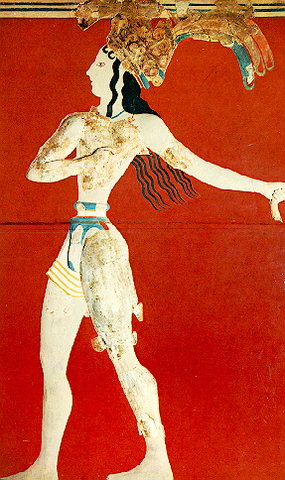Facts About The Prince of the Lilies
The "Prince of the Lilies" also known as the "Lily Prince" is an iconic Minoan fresco dating back to approximately 1550 BC, discovered on the Greek island of Crete. Fresco painting played a prominent role in Minoan art, with numerous exquisite examples unearthed in the palaces and homes throughout Crete. The Minoans employed specific color conventions, similar to those of the Egyptians, to animate their artwork. These frescoes provide us with valuable insights into Minoan life, artistic expression, and vibrant culture.
The original "Prince of the Lilies" fresco is housed at the Heraklion Archaeological Museum, while a replica is displayed in the Corridor of the Procession at the Palace of Knossos. The fresco portrays a young man, believed to be a "Priest-King" of Knossos, adorned with lilies and peacock feathers, strolling through a garden. Notably, the figure's white skin, traditionally used to depict women, adds an element of intrigue to the artwork.
This fresco has generated considerable interest and debate, particularly concerning its reconstruction. The original fragments were discovered by archaeologist Arthur Evans in 1901. The torso of the figure, initially thought to be that of a boxer, displays strong musculature, adding complexity to its interpretation. The lily crown and other elements are modern reconstructions based on educated guesses. The fresco has led to various interpretations, including connections to athletic representations such as the Boxer Vase from Hagia Triada and the boxing children fresco in Akrotiri on Thera.
Enhancing its cultural significance, a stylized version of the "Prince of the Lilies" fresco serves as the official logo for the Greek ferry company Minoan Lines.

 Albania
Albania